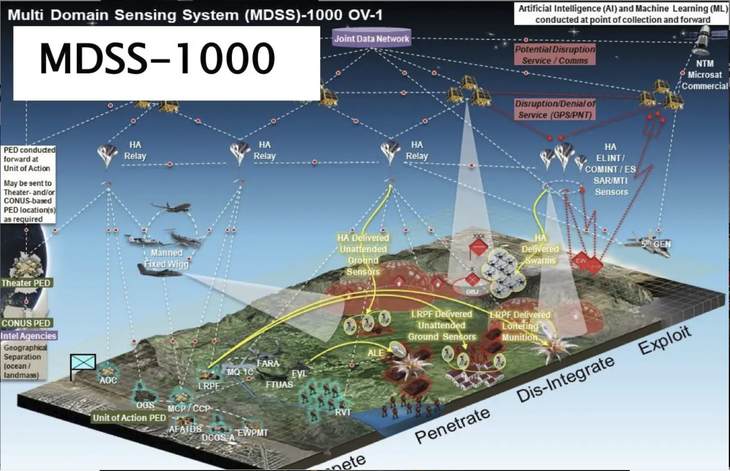We all assumed that the Chinese Spy Balloon was, in fact, a spy balloon.
But what if it weren’t? What could it have been, or what could a similar balloon do should it be equipped with a different kind of payload?
The most obvious answer, speculated about by many people, is an EMP delivery device. It would be easy enough to do, with the miniaturization of nuclear weapons, but also incredibly risky for obvious reasons: sending a nuclear weapon into US airspace is a bit more of a provocation than a spy platform traversing the country. If it was shot down, the fact that it carried a nuke would be blindingly obvious.
— Tyler Rogoway (@Aviation_Intel) February 6, 2023
But balloons equipped with something short of nuclear weapons are hardly in the realm of speculative fiction. Tyler Rogoway of The War Zone has been following all things military for a long time now and has reminded us that there are still useful tasks short of carrying EMP weapons that could seriously damage national security.
One obvious task could be as a weapons platform for some more exotic kinds of weapons, such as hypersonic glide vehicles. Presumably one could load a bunch of kinetic kill weapons, which if dropped from 25 miles high could pack quite a wallop. How practical this would be is another question, especially given the relatively small number of such weapons that could be carried. Presumably, some very high-value targets could make it worth it if was there a full-scale war, but short of that it would be insane for China or any other adversary to strike America out of the blue.
The weapons wouldn’t likely be numerous enough to threaten even our land-based nuclear deterrent, so frankly I don’t see the point. They could potentially be a killer weapon going after an aircraft carrier–hard to spot, nearly impossible to kill at the heights these balloons can attain (the one we shot down was relatively low compared to what could have been, and we barely could kill it). But controlling it would likely be difficult, and using it would start a war.
What about other possibilities? Well, the US has explored using balloons in warfare, and they have some serious potential–potential that may have been used by the very balloon we shot down, without our even knowing.
The U.S. Army is looking at developing a network of high-altitude balloons that would fly in the stratosphere and be able to launch swarms of unmanned aircraft, including those configured as loitering munitions, also known as “suicide drones,” over enemy-controlled territory. These lighter-than-air vehicles could also be configured as sensor platforms to collect various kinds of intelligence or deploy other surveillance systems that would fall to the ground in order to monitor hostile movements, as well as act as communications relays.
The Army’s Program Executive Office for Intelligence, Electronic Warfare, and Sensors, or PEO IEW&S, posted a briefing, which had been presented at a recent industry day event and that showed general depictions of these concepts of operation, on the U.S. government’s top contracting website, beta.SAMG.gov, last week. The balloons are one part of a broader, layered Multi-Domain Sensing System (MDSS) concept that the Army is in the early stages of developing.
It seems very unlikely that China secretly dropped loitering munitions, but drones and sensor platforms could easily have been dropped from the balloon without being discovered. Small, stealthy gliders could be dropped from a great height and have the capability of loitering for quite a long time. Given the great height from which they would be dropped they would have an extraordinary range, be nearly impossible to detect, and could provide far more useful intelligence than overhead imagery from space.
And it would be dirt cheap to do, compared to anything of similar value. I have confidence that the Pentagon could turn it into a multi-trillion dollar boondoggle, but anybody with a bit more fiscal sense could get tremendous intelligence on the cheap.

It was previously known that the Army was exploring using balloons floating in the stratosphere, which begins at altitudes ranging from 23,000 to 66,000 feet, depending on where you are on Earth, for intelligence, surveillance, and reconnaissance (ISR) and communications roles. As part of the larger MDSS network, they would fill something of a gap between traditional ground-based and aerial ISR and communications platforms and space-based systems.
“Conceptually, with the types of missions that the Multidomain Task Force is working, the high-altitude balloons would be a key capability enabler,” Brent Fraser, head of the Concept Development Division at Space and Missile Defense Center of Excellence, part of the Army’s Space and Missile Defense Command (SMDC), told Defense News in an interview in October. “[The balloons would] be able to provide some beyond-line-of-sight capability, whether it’s communications, extended distances, to be able to provide the ability to enable sensing of targets deep in the adversary’s areas, to be able to reinforce and complement existing sensing systems other than the aerial layer as well as the space layer.”
The military’s interest in the potential uses of balloons to deploy sensors and weapons gives the lie to the notion that a spy balloon has no dramatic benefits over the use of satellites–a notion that is implausible on its face. Satellite move very fast, can’t loiter, and certainly can’t drop difficult-to-detect ground sensors. A balloon can do those things.
Simply because the Chinese balloon could accomplish surveillance tasks that blow away the capabilities of current satellite technology doesn’t mean that any of these technologies were deployed. Without recovery of the balloon intact–and there is some speculation that the balloon platform had a self-destruct mechanism–we may never know exactly what it did or could do.
Using balloons for these various roles holds the promise of being able to deploy persistent capabilities in denied or semi-denied areas that could be difficult for an opponent to detect or neutralize. High-altitude balloons have traditionally had relatively small radar signatures and radar reflectors have been employed to make them more visible to reduce the chance of accidents. Electronic warfare packages, as well as using them tactically in concert with other platforms, could help maximize their survivability.
These would be cheaper than satellites and potentially less vulnerable than traditional manned or unmanned aircraft. With that in mind, balloons could also serve as at least interim replacements on relatively short notice for certain space-based capabilities, such as communications or navigation, should satellites get destroyed or otherwise disabled during a conflict, which is a very real possibility.
The ability to launch UGSs, or even carry out strikes directly on targets they find using individual loitering munitions or fully autonomous swarms, would only make them more flexible and disruptive to enemy operations. A swarm could include ISR-configured drones, as well as those capable of strikes, as well, allowing them to further scout ahead and find new targets on their own.
“It’s just phenomenal what we’re able to do with high-altitude balloons,” Army Lieutenant General Daniel Karbler told Defense News in an interview published earlier this month. “I don’t have the cost analysis but, in my mind, pennies on the dollar with respect to doing it. If I had to do it via a [low-Earth orbit] or some satellite constellation, what we are able to provide with high-altitude balloons, it’s tactically responsive support to the warfighter.”
We do know, though, that it was potentially quite a lot.
Check out Laughing Wolf’s take on the balloon debacle. He got a little feisty with this one!
Also: Tyler Rogoway has quite a scoop.
Exclusive!🚨👀
U-2 Spy Planes Snooped On Chinese Surveillance Balloonhttps://t.co/yWhBl8UEbE
— Tyler Rogoway (@Aviation_Intel) February 6, 2023








Join the conversation as a VIP Member